Minimalism. Have we got it all wrong?
As much as I love what Marie Kondo has done for American homes, even more I love that people are starting to explore what minimalism means beyond half-empty drawers and closets. Does it really end there?
As the things in our homes ebb and flow, we’re continually confronted with how minimal we want to be. With books such as the brand new The Longing for Less: Living With Minimalism by Kyle Chayka, I predict we’re going to start asking ourselves what minimalism means, not just what it looks like.
Chayka explains the history of the minimalist movement in the U.S. (it’s older than you think), reintroducing to us the concept of the minimalism of ideas, not just possessions. Even with a visibly pared-down home, we can still fill our time and minds with senseless fodder. We can even still buy buy buy if we toss toss toss. Until we apply minimalism to our time and attention, we may always be chasing our tails, or that next pretty, new must-have “minimal” product.
I haven’t read the book yet, but its author’s Opinion piece in the New York Times, What We Get Wrong About Minimalism has already has given me much food for thought. He suggests the current minimalist movement has actually made us more preoccupied with objects (even if it’s in the discarding of them). In the last week since I’ve read the piece, parts of it echo in my head each day. Here’s one:
"Minimalism, to me, is more about attention than anything else. It advocates seeing the world not as a series of products to consume, but sensory experiences to have on your own terms. A stand mixer can be as beautiful as the Mona Lisa. Historically, minimalism tells us to focus on what doesn’t at first seem pleasant or beautiful and turn it into art instead of creating a worldview based only on what we already like."
Could it be that seeing the beauty in everyday objects and moments could become a meditation in enough-ness?
Professional Organizers sometimes like to ask clients if the possession in question is being saved for their future self, or fantasy self. So many times, the answer is yes. Getting to “yes” doesn’t always mean that letting go is easier, but it suggests a turn towards building a space that supports who you are now, and noticing the price today’s version of you pays to store that thing for the you you may never become.
In that light, Chayka goes on to predict:
"Minimalism as a static style will inevitably end, as all trends do, and we’ll turn against the empty walls, skeletal furniture and soft textures. We’ll embrace bright colors and loud patterns and call them the next new thing. But minimalism’s fundamental ideas will remain as long as human civilization, because we never quite learn its lesson: What already exists immediately around us is more important than all of our anxieties about what’s not there yet. The imperfection of reality is perfect.”
The Longing for Less was just reviewed by Jia Tolentino in the New Yorker, The Pitfalls and the Potential of the New Minimalism. She shares this excerpt from the book:
"True minimalism, Chayka insists, is 'not about consuming the right things or throwing out the wrong; it’s about challenging your deepest beliefs in an attempt to engage with things as they are, to not shy away from reality or its lack of answers.' I suspect that some recent converts to minimalism have already come to this conclusion. Underneath the vision of ‘less' as an optimized life style lies the path to something stranger and more profound: a mode of living that strips away protective barriers and heightens the miracle of human presence, and the urgency, today, of what that miracle entails.”
If a heightened miracle of human presence is what we are moving towards, even if only getting partway there by filling donations bags, then may the trend long outlive Chayka’s prediction of its demise!
Buy The Longing for Less: Living With Minimalism.
Read What We Get Wrong About Minimalism in the New York Times.
Read The Pitfalls and the Potential of the New Minimalism in the New Yorker.
Wherever you are on your journey towards (or away from) minimalism, do you think Kyle Chayka’s perspective will help you to not only buy less, but sit still longer, appreciate differently and appreciate more? Do you also have a deeper take on what “minimalism” means to you? Please share in the comments!


